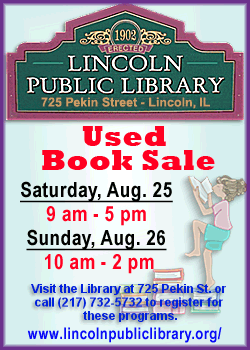 At the time there was a little shop open in Lincoln offering to buy
gold at good rates. I went in and offered my dental gold sample to
the girl to assay (the fancy term they use to determine the value of
precious metals and gems). She weighed it and did not tell me how
much it weighed. Then she made a phone call while she held my piece
of gold in her hand. She got off the phone and said, "I'll give you
$25 for your gold." At the time there was a little shop open in Lincoln offering to buy
gold at good rates. I went in and offered my dental gold sample to
the girl to assay (the fancy term they use to determine the value of
precious metals and gems). She weighed it and did not tell me how
much it weighed. Then she made a phone call while she held my piece
of gold in her hand. She got off the phone and said, "I'll give you
$25 for your gold."I must have sounded offended, as I stuck my
hand out and demanded my dental gold back, firmly saying, "No!" I
knew my gold was worth something, and it was certainly more than
$25. What, did I have the word "sucker" emblazoned in Magic Marker
on my forehead? I left in a huff.
It took three weeks to recover from that little episode of
almost-being-taken-advantage-of. In the meantime I did some checking
and knew that gold was worth more than $1,600 per troy ounce. A good
friend told me he had been treated right at XXXX XXXXX Jewelers
(name obscured to avoid phone calls and lawsuits) on his deals
selling gems and gold and recommended that I go there. So, the next
time I was in Bloomington, I went there.

The treatment was much different from the start. I sat in plush
waiting chairs in the waiting area. I was offered coffee, tea, soda
or anything else to drink and offered a piece of cake or a doughnut
while waiting for the assayist. I was called forward and sat down,
introduced to the assayist, given a brochure and a business card,
and was even asked how I was today. All very disarming, endearing
and trust-provoking. However, I kept my guard up.
I handed him the piece of gold, told him my story about the $25
offer from the last place, to which he said, "Tsk, tsk," and said he
was sure he would do much better. He weighed it on his very
fancy-looking scale, pushed a button, and a report came out a
printer located at the right side of the desk. He studied the report
for a minute and said he had very good news for me.
The report said my piece of gold was 11 pennyweights. I felt
confused. I am sure I looked confused too. I was expecting to be
told my piece of dental gold was some percentage of a troy ounce,
and here I was being told its weight in pennyweights. He told me
that of course the store had to take a markup on the gold, and his
offer for my dental gold was $75. "Three times the price those
charlatans offered you," he said.
I balked. I thought. I wavered. I asked if this was the best
price I could expect from the sale of this dental gold, and he
smiled and said, "Oh, yes."
I took the $75 with some reluctance and went to Barnes & Noble
and bought my wife's birthday present, all the time thinking I
probably had gotten a raw deal.
When I got home I Googled "pennyweight." Wikipedia said
pennyweight was the alternative method of weighing gold and that 20
pennyweights equaled 1 troy ounce.

I was immediately furious. I had been taken advantage of in a
very sly and stylish manner.
Changing the method of weighing the gold had been enough to put
me on tilt, and already impatient from waiting and put into trust
mode by the offer of coffee and cake, I took the measly $75 I was
offered.
The real price should have been about $700-$800. They made a
bunch of money on me and were probably laughing at me as I drove
away. Or maybe they have duped so many people that they no longer
laugh on their way to the bank.
Gold dealers make big money by giving you much less than you
deserve for your gold. They sometimes operate by subterfuge or
confusion. It doesn't seem to matter if you go to a hole in the wall
or a fancy place.
[to top of second column] |

So, here is my revenge. I am going to give you my foolproof
script to get the right value for the sale of your gold. Print it
out and take it with you. Proceed step by step, and you will be more
likely to get a fairer price for your gold. Ready?
1. Figure out ahead of time the places you will offer your gold for
sale, and take a pocket calculator with you. The calculator will
make you look smart, help you keep score and intimidate them a
little.
2. When you sit down with an assayist, first ask what the value of
an ounce of gold is today on the open market. (At this writing, gold
had settled at $1,604 per troy ounce. It would be a good idea to
know this before you go to make your little gold transaction, so you
can compare it with what the assayist says. If there is too big a
deviation from the current value, or the assayist says he or she
doesn't know, then walk and try somewhere else.)
3. Let the assayist know that you understand they need to make money
in this transaction. Ask what price they are going to give you for
an ounce of gold. (If gold is $1,600 a troy ounce, they aren't going
to give you $1,600. They are more likely to give you a price some
20-25 percent lower so they can make a profit. Take out your
calculator and figure out the margin they're going to make on the
gold. If they say they will pay $1,250 per ounce, then divide 1,250
by 1,600 and the calculator should say 0.78. This means they are
taking a 22 percent markup on the gold.)
If that seems too much to you, then negotiate and tell them what
percentage figure you are comfortable with. If they accept, then the
deal can proceed. If not, walk and go to the next place on your
list.
Repeat steps 2 and 3 until you find an assayist willing to take
your deal on the markup.

4. If you come to an agreement on the markup, then hand them the
sample of gold you want to sell. They will weigh it. Watch your gold
sample throughout the time they have it in their possession. The
worst trick they could pull would be substituting something
worthless for your gold and giving it back to you in some obscured
manner, like putting it in an envelope (see how low my trust is).
5. They may tell you the weight in either pennyweights or troy
ounces. If it is pennyweights, then translate that into troy ounces.
There are 20 pennyweights in 1 troy ounce. So, 1 pennyweight is
1/20th of an ounce. If your gold weighs 1 pennyweight, divide their
offered ounce rate by 20 and that should be the wholesale value of
your gold (if you settled on $1,250 per ounce, then one pennyweight
should be worth $62.50).
6. Ask the assayist for the amount he or she is offering. If there
is any difference between what you privately calculated in step 5
and the offer, ask why there is a difference. If you are satisfied
with the price offered and the reasons for offering it, then take
the deal. Remember there are different grades and purenesses of
gold, and the assayist should be able to help you understand the
offer. If you don't agree, go to the next gold-buyer and start again
at step 2.
I got snookered. There is no reason you should too. Good luck!
[By JIM YOUNGQUIST]
 |